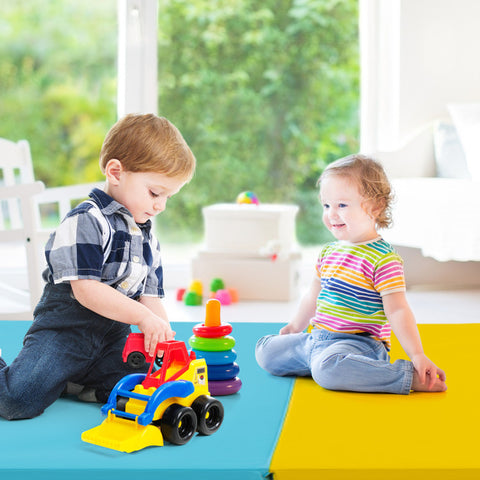News
What to Do If Your Gymnastics Mat Starts to Wear Out: Repair or Replace?
When your gymnastics mat starts to wear out, knowing whether to repair or replace it is key for maintaining safety and performance. Over time, even the best gymnastics mats can show signs of damage like foam compression, torn vinyl, or weakened seams. Ignoring these issues can lead to injuries during tumbling or acrobatics. If you're wondering what to do if your gymnastics mat starts to wear out: repair or replace?, this guide covers how to assess the damage and make the right choice for continued safety and durability.

How to Inspect a Worn Gymnastics Mat
Before deciding to repair or replace your gymnastics mat, inspect the mat carefully. Look for the following signs of wear and tear:
- Cracked or torn vinyl surface
- Compressed or uneven foam
- Open or fraying seams
- Loss of grip on the bottom layer
If you're using the mat for gymnastics, tumbling, martial arts, or yoga, even minor damage can affect stability and increase risk of slipping or impact injuries.
When Is It Okay to Repair a Gymnastics Mat?
Some damage is minor and can be fixed with the right tools and repair kits. Here are cases when it's reasonable to repair a mat:
1. Surface Tears or Punctures:
Small cuts or punctures in the vinyl can be patched using vinyl repair kits or heavy-duty adhesive patches. These prevent further tearing and help extend mat life.
2. Loose Seams:
If a seam has come loose but the foam is still intact, it can be sewn or sealed with strong fabric glue or seam tape.
3. Dirty or Sticky Surfaces:
Sometimes, mats feel “worn” because of grime or residue. In these cases, a thorough cleaning with a mild solution and soft cloth can help restore texture and grip.
TIP: Always follow manufacturer guidelines when using repair kits. Using the wrong material might worsen the damage.
When You Should Replace Your Gymnastics Mat
There are instances where replacement is a better—and safer—option than repair. Consider replacing your gymnastics mat if:
1. The Foam Is Compressed or Uneven:
If the mat no longer absorbs shock or has soft spots that compromise support, it's time to replace it. Foam that has lost density can't be repaired.
2. Large or Spreading Tears:
If the vinyl is torn in multiple places or the tear is larger than a few inches, patches might not hold up during use.
3. It’s More Than 5–7 Years Old:
Even with regular maintenance, gymnastics mats wear out over time. Older mats may have hidden weaknesses that pose safety risks during high-impact activity.
4. Slipping or Curling Edges:
If the mat no longer lays flat or the bottom surface has worn smooth, it can become a slipping hazard—especially during routines or training.
Factors to Consider When Replacing a Mat
If you decide to replace your gymnastics mat, think about the features that matter most for your sport or practice style:
- High-density foam for shock absorption during tumbling
- Durable vinyl coating to resist tears and moisture
- Foldable or roll-up designs for easy storage
- Non-slip backing for stability on hard floors
Brands like Tumbl Trak, Dollamur, and We Sell Mats offer mats specifically made for gymnastics and acrobatics training.
How to Extend the Life of Your Gymnastics Mat
- Proper care helps delay wear and tear and ensures your mat stays safe to use.
- Clean regularly with non-abrasive cleaners
- Avoid wearing shoes on the mat
- Store mats in dry, cool areas
- Rotate mats occasionally to distribute usage evenly
TIP: Using a protective cover or placing mats on clean, dry surfaces reduces premature damage.
Conclusion
If you’re wondering what to do if your gymnastics mat starts to wear out: repair or replace?, start by evaluating the extent of the damage. Minor issues like small tears or loose seams can usually be fixed with repair kits, but compressed foam or major surface damage means it's time to replace. Whether you're practicing gymnastics, tumbling, martial arts, or yoga, the condition of your mat directly affects your safety and performance. Investing in a quality mat—and maintaining it properly—goes a long way in avoiding injuries and improving your workouts.

